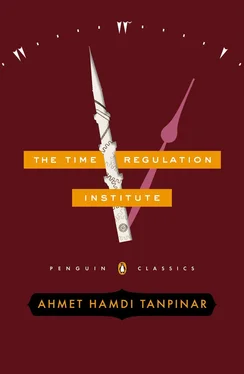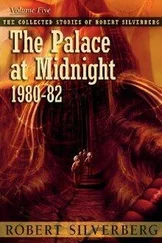A number of those entering the second competition did warm to the idea of a building that reflected the clock theme both inside and out, but still the architects limited themselves to rectangular buildings. Almost to a man, their prospective structures suggested alarm clocks or grandfather clocks, using either additional ornamentation or a narrow foundation with extra floors. Some went further and arranged their second- and third-floor facades to suggest the face of a large clock. Such conceits called for the concentration of windows in the middle of a largish circle. Halit Ayarcı took a dim view these proposals too. To some he said:
“Such ornaments can be tacked onto any building. What’s modern about these designs? I see nothing modern here and nothing pertaining to clocks.”
Other proposals he rejected by saying:
“These are all fine as far as they go, but what happens when we have to renovate? Will we be obliged to remove the clockface altogether? The windows will draw our eyes to the regularity of the floors, and what will be left of our clock?”
Naturally the answers varied. A building could never actually be a clock. A clock has a particular face and a structure all its own. In this sense it already resembles a building. In the face of opposition Halit Ayarcı would either tap on the relevant sentence in the competition rules, which he had written out in block letters and placed under the glass on his desk, or he’d have applicants write out the sentence themselves before pointing to a panel on the opposite wall that read, “Inside and out.”
One applicant took the idea further still by making the windows that looked onto the second- and third-floors light shafts resemble clockfaces. And what’s more, his design set the entire building to rest atop four substantial pillars. But Halit Ayarcı rejected this one too.
“All too forced! A window’s a window. But this isn’t a window at all! If I simply rubbed off the designs on the sides, it would look just like Gothic stained-glass. No, we’re looking for something else. We want the concept of a timepiece to be embodied in the very structure of the building. They should be as one! We don’t want motifs soldered on. We want to see our programs and goals manifested in the building itself.”
It was these very words (I must confess) that alerted me to the central problem. “If the concept of a timepiece merges with a building’s structure,” I thought, “then that building loses its identity as a building.” And I nearly burst out laughing, out of pity for my poor friend. But the following morning I arrived at the following conclusion unassisted: “A building that has renounced its very essence as a building, and in so doing denies a building’s fundamental principles, should be quite capable of planting the concept of time within man!” I shared my idea with the first architect I met that day. Unprepared as I was, I was unable to furnish an explanation worthy of the idea. Yet this conversation left me with the idea of “mass.” “I can make this happen,” I thought, “if I can liken a building to a clock in such a way as to annihilate the concept of mass.”
It was one of those nights when Ahmet happened to be at home; a quiet dissenter in all things pertaining to the Time Regulation Institute, he usually only came to see us on holidays. We discussed my dilemma. He supported the architect’s opinion: “Before it can be anything else, a structure is by its very nature a mass.” The following day I dismantled a clock and then reassembled it. No, it was impossible. This wasn’t the way to make it work. Perhaps I could make use of its internal structure, but I would still have to do something about the exterior. Halit Ayarcı didn’t like the idea of designing the entire facade in the shape of a clockface. So I’d have to come up with something else.
Meanwhile I stayed in regular contact with Halit Ayarcı; I pleaded with him to save himself and the institute from so much pain and suffering, assuring him that just about any structure would fully suit our needs. But he was adamant.
“Until now the Time Regulation Institute has done everything it has promised to do,” he said. “Indeed neither city clocks nor personal timepieces function with due timeliness. But our people have now acquired the habit of checking and resetting their timepieces, and though we might not have brought timepieces to the villages, we have at least instilled in their inhabitants a taste for them. There are today a million village children wearing toy watches that we ourselves sold them! What this means is that when they grow up they’ll all buy watches, with the help of the easy watch-exchange plans made possible by our Timely Banks. And if such toys are fundamentally useless, well, at the very least they are property their owners can pawn, or sell for a nominal amount, if they fall on hard times. We’ve produced women’s watches in the form of delightful bracelets. And we have applied the same concept to the entire range of costume jewelry. May I draw your attention again to our garter belts adorned with miniature clocks, which are enjoying worldwide success? You may recall that you were very much opposed to these, saying they’d only be of use in music halls, whereas thousands of ladies in Istanbul wear these garter-belt watches today. A belle dame can lift her skirt in the most elegant way possible, to check the time as she strolls down a busy boulevard. But that is not all: remember that the International Clock Lover’s Society has now approved my proposal to have a number of state awards marked with timepieces. This has sparked a tremendous promotional surge. Following on from this — and thanks also to your lecture at the last congress — there is renewed international interest in Mahmud II, he who presented golden watches to all those he dearly loved and appreciated. Books upon books are being written about this man. Why should I back down in the face of all this success? We may not have established a watch and clock industry yet, but we have expedited the adoption of new regulations that should make it easier to import timepieces. The country’s finest timepiece emporia operate under our corporate umbrella! How can a functioning, and indeed thriving, institute go back on its word? What right does it have to do so? Why should I accept the doom and gloom of naysayers? And all this aside, why would I ever portray myself as vanquished or in the wrong? I am not in the wrong! I set but one condition, and those who can abide by it will do so.”
“That’s wonderful, sir, just wonderful, but as you see, they simply can’t do it. It’s just too difficult to realize.”
“But it must be done!”
Deaf to his words, I pressed on:
“And anyway this isn’t your fault! I was the one who added this ‘inside and out’ clause to the rules and regulations. I am only human, and I was angry with you because you were so insistent on the matter! Backing down here really doesn’t count as a defeat!”
I felt my face flush crimson. I lowered my head and waited for his answer. Halit Ayarcı smiled softly, or, really, it was as if his voice were smiling as he spoke.
“I know,” he said. “I’m aware of this. I’d like to thank you for saying it. But I’m going to thank you for something else as well. And that is for your flawed ideas in regard to such matters, or rather for your churlish disposition, which has forced these ideas upon you. Thanks to all this, we shall soon have a truly original building! I am a man made for results, not intentions. You did well in adding those words! Now we must remain steadfast. Don’t forget that the International Congress will take place here, in April next year. I want to host this congress in our new building. But others have already taken the idea from us and surpassed us in our own field. If nothing else, let us create a building whose originality establishes us as leaders in our realm.”
Читать дальше












